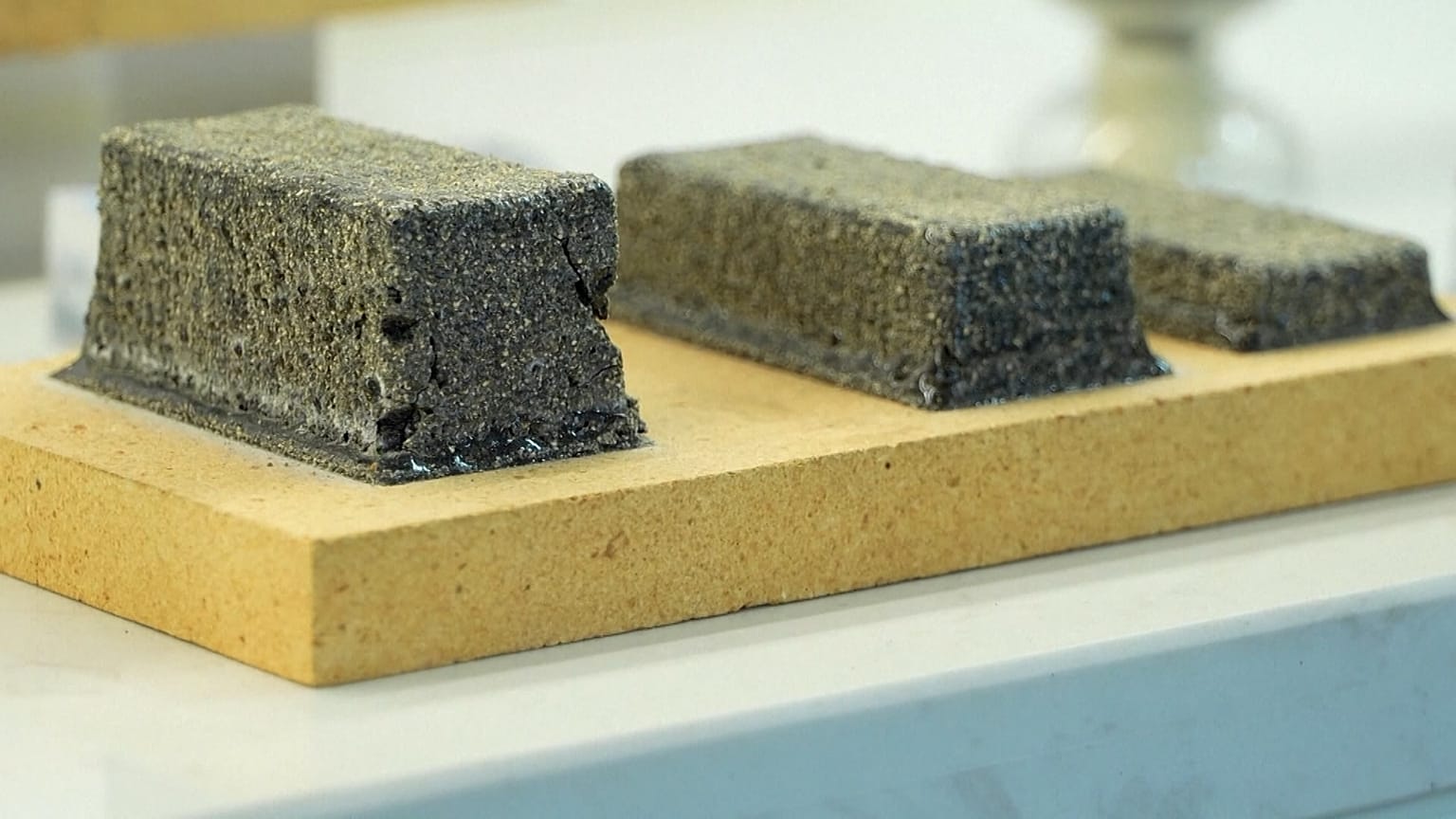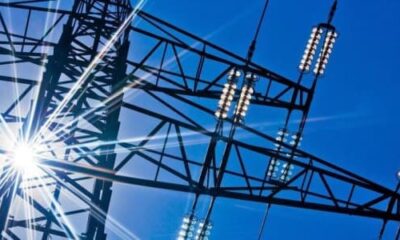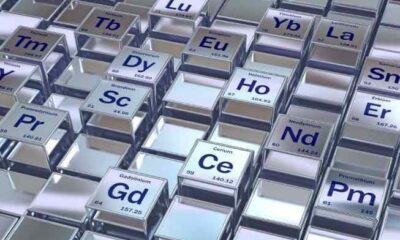Science
China’s Lunar Soil Bricks Return from Space, Advancing Moon Base Plans

China has achieved a significant milestone in its lunar exploration efforts with the return of its first experimental ‘lunar soil bricks’ from space. These bricks, designed to withstand the Moon’s harsh conditions, were part of a pioneering experiment aboard the Shenzhou-21 spacecraft, which successfully landed back on Earth last week. The mission included three astronauts who had completed a six-month stay in space.
Initial evaluations indicate that the 34 returned bricks, each weighing approximately 100 grams, have endured their year-long exposure remarkably well. The samples were engineered using materials that replicate the composition of lunar regolith and were subjected to advanced manufacturing techniques, including hot pressing and microwave sintering. These methods have reportedly enhanced the compressive strength of the bricks, making them about three times stronger than conventional bricks.
Insights from the Experiment
According to Zhou Yan, an associate professor at Huazhong University of Science and Technology in Wuhan, the inspection of the samples revealed no visible defects, such as dents or holes that could arise from impacts by meteorites or space debris. “Upon opening the lid, we found that the samples were in good condition,” he stated. “Besides, their colors looked slightly lighter than before, which requires further assessments to understand.”
The experiment aims not only to evaluate the mechanical properties of the bricks but also to understand their thermal behavior and resistance to radiation after prolonged exposure in space. Qin Yiheng, a graduate student involved in the project, explained that some bricks were created with specific seams to observe changes in their properties over time. A control group of bricks remained on Earth to allow researchers to make precise comparisons regarding the effects of space conditions.
Future Implications for Lunar Construction
The findings from this experiment could be pivotal for China’s lunar ambitions, particularly in the context of its plans to establish a basic version of the International Lunar Research Station by 2035 and to land astronauts on the Moon by 2030. The use of lunar soil for construction is part of a broader strategy to minimize costs associated with transporting materials from Earth. By utilizing in-situ resources such as lunar soil, solar energy, and local minerals, China seeks to build a sustainable presence on the Moon.
Zhou noted that through ongoing analysis, researchers hope to develop a predictive model for how these bricks will perform over extended periods on the lunar surface. “After the return of the third batch of samples, we may be able to discover a pattern and ultimately build a model to predict their condition after five, 10, or even 20 years of service,” he said. This research not only promises to advance China’s lunar construction techniques but also enhances our understanding of materials’ durability in extreme environments.
As China continues to push the boundaries of space exploration, the successful return of these lunar soil bricks marks a crucial step toward realizing its vision for a lunar base, known as the Guanghan Palace. This ambitious project represents both a technological challenge and an opportunity for international collaboration in the realm of space research and exploration.
-

 Entertainment3 months ago
Entertainment3 months agoAnn Ming Reflects on ITV’s ‘I Fought the Law’ Drama
-

 Entertainment4 months ago
Entertainment4 months agoKate Garraway Sells £2 Million Home Amid Financial Struggles
-

 Health3 months ago
Health3 months agoKatie Price Faces New Health Concerns After Cancer Symptoms Resurface
-

 Entertainment3 months ago
Entertainment3 months agoCoronation Street’s Carl Webster Faces Trouble with New Affairs
-

 Entertainment3 months ago
Entertainment3 months agoWhere is Tinder Swindler Simon Leviev? Latest Updates Revealed
-

 Entertainment4 months ago
Entertainment4 months agoMarkiplier Addresses AI Controversy During Livestream Response
-

 Science1 month ago
Science1 month agoBrian Cox Addresses Claims of Alien Probe in 3I/ATLAS Discovery
-

 Health4 months ago
Health4 months agoCarol Vorderman Reflects on Health Scare and Family Support
-

 Entertainment4 months ago
Entertainment4 months agoKim Cattrall Posts Cryptic Message After HBO’s Sequel Cancellation
-

 World2 weeks ago
World2 weeks agoBailey Announces Heartbreaking Split from Rebecca After Reunion
-

 Entertainment3 months ago
Entertainment3 months agoOlivia Attwood Opens Up About Fallout with Former Best Friend
-

 Entertainment1 week ago
Entertainment1 week agoCoronation Street Fans React as Todd Faces Heartbreaking Choice




















